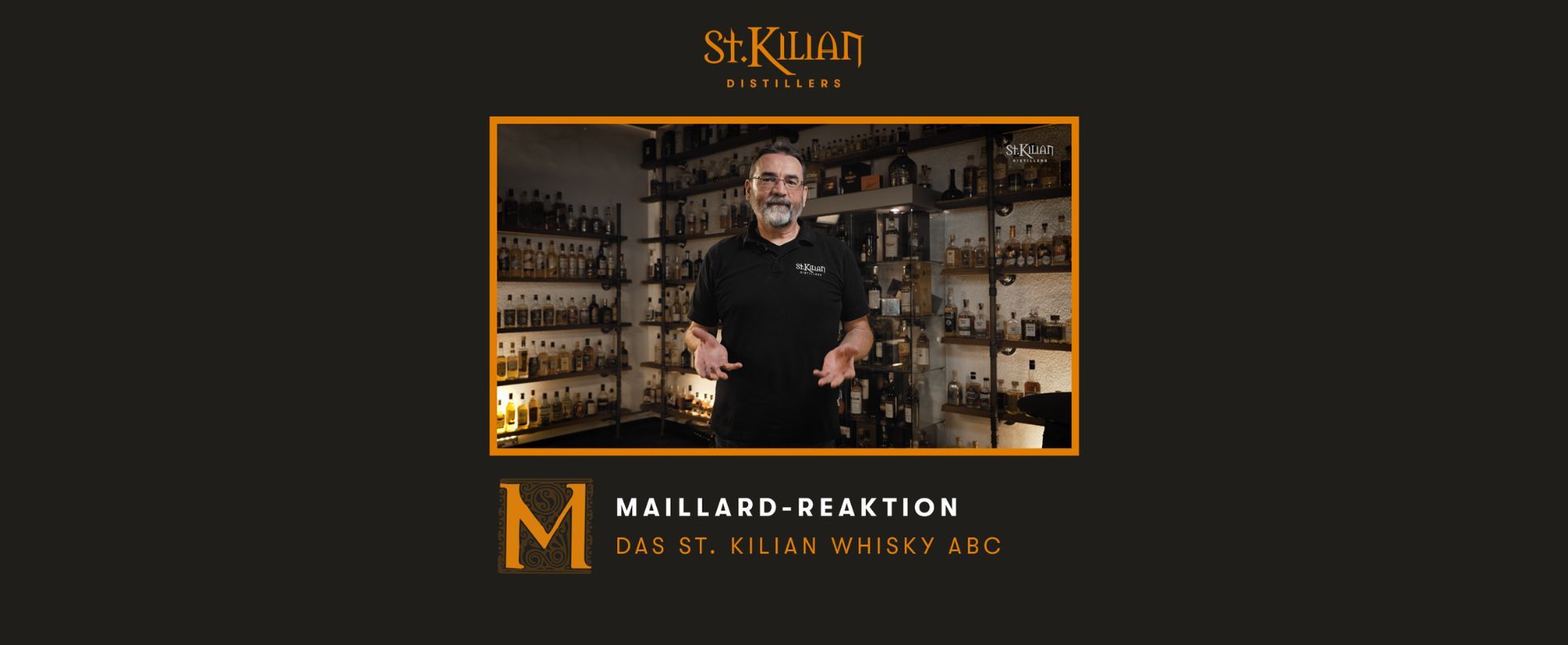M – like Maillard reaction

What is the Maillard reaction?
The Maillard reaction is not a single reaction, but a complex series of reactions between amino acids (= building blocks of peptides and proteins) and reducing sugars (e.g. maltose, glucose). Under the influence of heat, an abundance of aromatic and coloured products are formed. The Maillard reaction is also known as the “non-enzymatic browning reaction”.
What does the term non-enzymatic browning reaction mean?
This means that no enzymes (= biocatalysts) are necessary or present in a chemical reaction between the various reaction partners – in our case the amino acids and the sugars. The reaction therefore takes place without enzymatic assistance.
Are there also enzymatic browning reactions?
Of course! An example of an enzymatic browning reaction would be the brownish discolouration of an apple in the air as soon as it is cut with a knife. This is because as soon as oxygen reaches the fresh cut surface, enzymes in the apple trigger reactions that lead to this brownish discolouration of the fruit flesh.
How did the Maillard reaction get its name?
The reaction is named after the French physician and chemist Louis-Camille Maillard (1878 – 1936), who investigated the reactions of amino acids and carbohydrates as part of his doctoral thesis in 1912.
Where can the Maillard reaction be observed?
Everywhere in everyday life. Because whenever foods containing protein are roasted, fried or baked, these flavourful and colourful Maillard products are formed. For example, the dark colour and intense aroma of roasted coffee, the delicately spicy aroma of roasted or grilled meat, the browning and umami taste of fried onions, the golden brown colour of French fries and the dark crust of freshly baked bread can all be attributed to chemical substances formed as a result of the Maillard reaction. Each food has its own unique set of flavourings that are created in the process.
Do Maillard products also form during the production of whisky?
Of course. Throughout the whisky production and maturation process, an abundance of these aromatic, flavourful and colourful products are created as a result of the Maillard reaction.
How does the Maillard reaction work in detail?
The reaction takes place between reducing sugars and amino acids under the influence of heat. Factors such as temperature and duration determine the course and type of products of the Maillard reaction, which can start at temperatures >50°C and proceeds very quickly at 140-165°C. The product range of the Maillard reaction is very diverse. For example, more than 24 different Maillard products were detected in the reaction of the sugar glucose (dextrose) with the simplest amino acid glycine. If glucose is replaced by the naturally in wood occurring sugar xylose (wood sugar), over 100 different chemical substances are formed as Maillard products when heated with glycine.
What do these Maillard products look like from a chemical point of view?
The Maillard products formed are mostly ring-shaped, so-called cyclic compounds. These rings consist of carbon atoms and also have another element in the ring, such as oxygen (= furans), nitrogen (= pyrroles) or sulphur (= thiophenes). In chemical terms, this kind of ring-shaped compounds are generally referred to as heterocycles. In addition, strongly coloured compounds are formed during the Maillard reaction, which have a colour spectrum from yellow-brown to almost black and are summarised under the chemical term “melanoidins”.
Where does the Maillard reaction occur in the whisky production process?
In the production of whisky, the Maillard reaction occurs during kilning, mashing and distillation. The latter especially when the stills are directly fired. Maillard products are also formed when the oak barrels are charred, as sugars released from the wood react with the amino acids and proteins also present in the staves under the heat of the fire.
Does the malt change colour during kilning?
Yes. Depending on the duration and intensity of the heat exposure during the drying of the malt, the coloured Maillard products – the melanoidins – are formed in different quantities, which are then reflected in the individual colour of the dried malt. This is why large malt houses offer different types of malt – from pale Pilsner and darker Munich malt to Melanoidin malt, CARAMÜNCH® and dark roasted rye malt. Due to the different formation of Maillard products depending on the duration and temperature of kilning, these malts are also characterised by their individual aromas.
What flavours do Maillard products have in whisky?
The ring-shaped, aromatic, flavoured and coloured compounds from the Maillard reaction are perceptible even in the smallest quantities and contribute to the floral, grassy, malty, roasted, nutty, bitter, cereal, caramel and toffee-like notes in matured whisky.
Does the Maillard reaction also have disadvantages?
Yes. This is because some of the grain proteins react with various sugars during mashing, which are then no longer available to the yeast for conversion to the potable alcohol ethanol during the subsequent fermentation in the washbacks. For example, too much Maillard reaction during mashing and therefore too much sugar consumption can have a negative impact on the alcohol yield after fermentation, i.e. reduce it.
Is caramelisation also a Maillard reaction?
No. Caramelisation is a reaction only between sugars when they are heated in the absence of nitrogen-containing compounds. Products are formed that can also lend flavour and colour to the malt. The caramelisation reaction normally requires more drastic conditions (temperatures of >120°C). For example, the sugar glucose reacts with itself from a temperature of around 160°C and caramelises over time. By splitting off water, the glucose changes its consistency, colour and taste. Time and temperature are of crucial importance in caramelisation reactions, as the flavour and colour of the products can change drastically with increasing heat exposure.